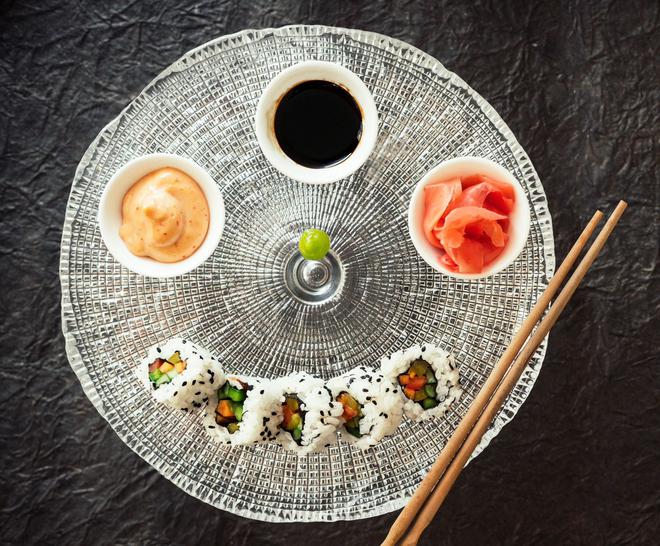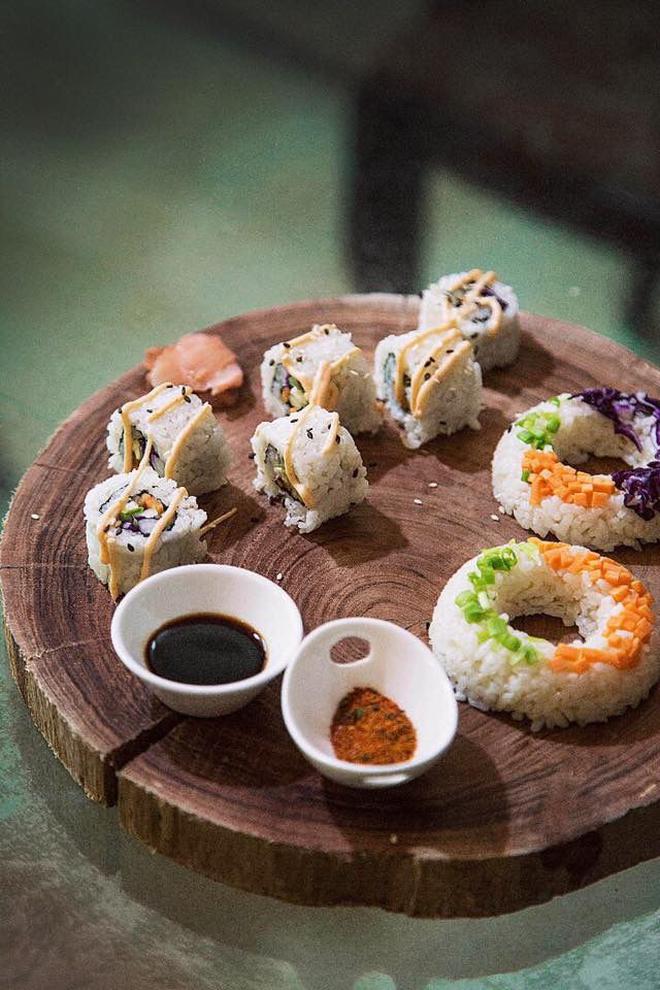International Sushi Day is on June 18. And if you have had achari sushi, paneer tikka sushi or Jain sushi, then you know sushi has already found its Indian avatar. This Japanese dish made with rice rolled in seaweed is now an integral part of almost every commercial venture that has an Indian touch, hence a sushi that tastes like an Indian snack.
Tarla Dalal’s cooking website — now maintained by her son — addresses this demand with a recipe for dhokla sushi. After heavily Indianising dim sum as malai momo and jalebi momo chat, it is time for sushi to go desi, and the demand for desi sushi has been increasing at banquets.

So the Indian twist includes spicy mayaonnaise and chat masala replacing wasabi and soya.
In one such Indian-flavoured sushi, Jaipur-based food consultants Cauldron Sisterss are working on achari sushi. Ratika Bhargav, one of the two Cauldron Sisterss (the other sister is Richa Khaitan) says, “We know we are tweaking this dish way beyond the imagination of the Japanese. As food consultants, we have to meet the client’s demands. Indians love to try new cuisines with an Indian touch. As non-meat eaters, we are constantly on the lookout for newer interesting dishes. We came across a tweaked version of sushi in Singapore. It was dal-pakora sushi with pickled sauce. We mostly use vegetables in the sushi roll and our dips come with a spicy, chatpata touch. That is how we started the achari dip with sushi”
Ratika says she has come across a sweet mango sushi, which is almost like eating Thai sticky rice with ripe mango.

Going by the data from a survey by Swiggy, there has been a 50% increase in orders of sushi since January 2019. Demands have also been recorded from smaller cities like Guwahati and Ludhiana.
What is the reason to give a desi touch to non-Indian dishes? Chef Jitu Phukan, an Asian speciality chef who worked with the Oberoi in Mumbai says, “The fascination is with the name of the dish, sushi and not the actual dish. The majority of the Indian palate is used to familiar flavours. Anything without it becomes unpalatable to them. So while they want to eat what is trending, they want it with familiar flavours.”
Ratika agrees and reasons that Indians’ love for explosive flavours makes them want chatpata and tandoori touch with anything and everything. “Indo-Chinese is a standing example. The most common replacement for seafood and meat in sushi is paneer. With the leftover sushi materials— the crumbs and the sides — we also make a sushi salad.”
Sushi is so much in demand that it is now also found as cakes in India. After all, when there can be a rasamalai cake and gulab jamun cake, why not a sushi cake? Lets_Maki started making sushi cakes in Kolkata and is now present in more than six Indian cities. Their best-selling vegetarian sushi cake is the tofu truffle oil sushi cake which is hugely popular with diners looking for an alternative to the usual birthday cake.
Mumbai-based Chef Karan Bane says the day he received an enquiry for Jain sushi he knew there is no looking back for sushi. “Sushi for large banquets usually have an Indian touch. Any vegetable tempura sushi with a spicy dip or a drizzle of spicy mayonnaise works well. I have even heard of butter chicken sushi but have not tried it yet.”
Still not convinced? Masterchef India had a biryani sushi roll. I rest my case.






